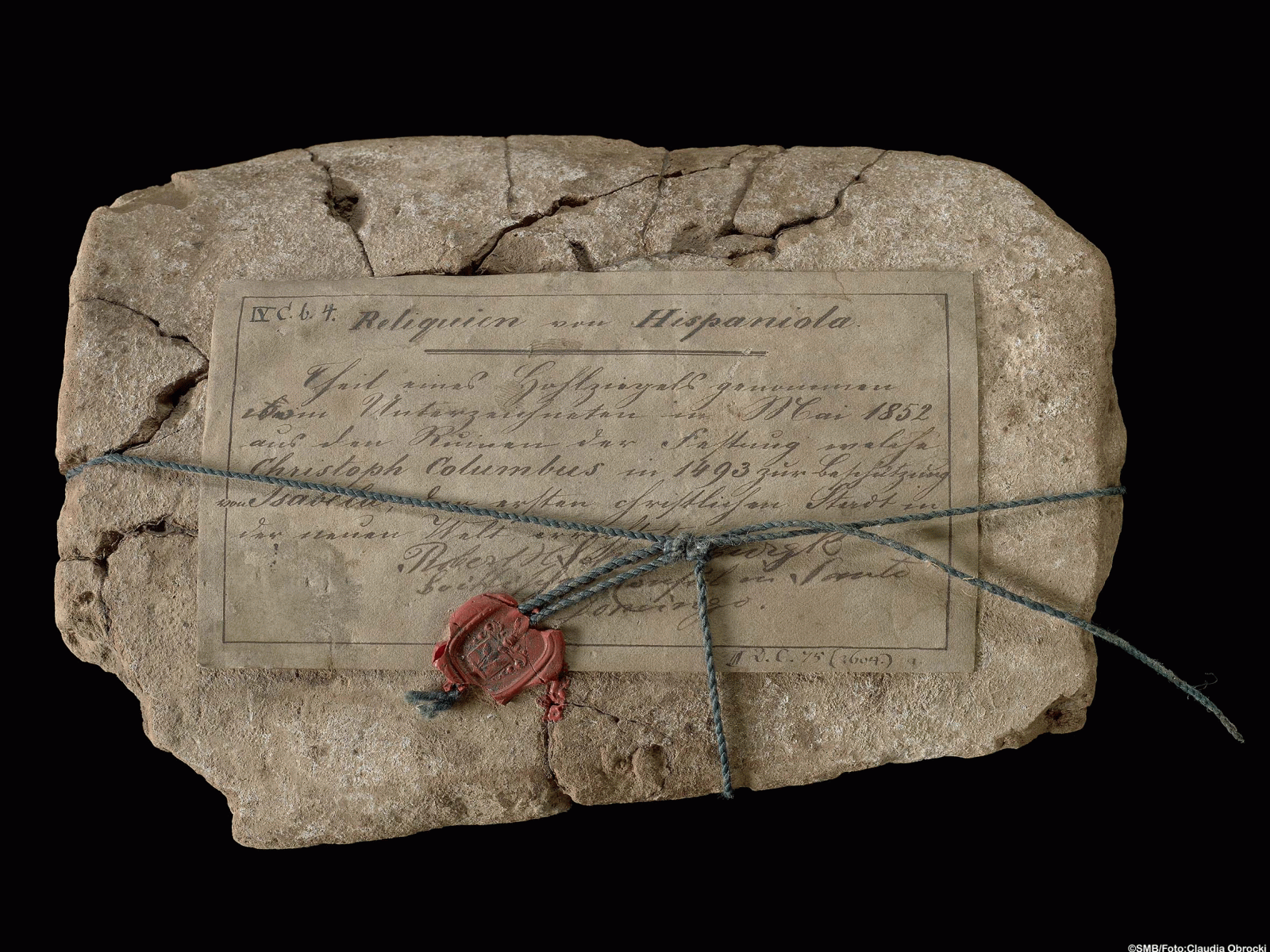Historiography, Media Library, Objects
VIDEO: Fragments of the Spanish Conquest from the Americas: Relics or Memorials? Curator Talk with Manuela Fischer & Bat-Ami Artzi
By means of two case studies closely related to the Spanish conquest of the America, Bat-ami Artzi and Manuela Fischer reflect on the value of the fragment as an aesthetic and scientific interpretative tool within the European tradition. They also consider the role of fragments as relics and memorials, and examine their relation to questions of identity in both an Andean and European context.
26.02.2021

The Spanish invasion of the American continent represents a fascinating example of how multiple historical points of views and methods of documentation may co-exist. In this 4A_Lab conversation, Manuela Fisher and Bat-ami Artzi introduce selected fragments from the Ethnological Museum in Berlin to illustrate a European and a native vision of this historical event.
The European point of view is explored through the figure of German-born explorer and naturalist Robert Schomburgk (1804–1865), who was appointed British consul of the Dominican Republic in 1848. In 1852, Schomburgk ventured on a trip in the hinterland of the island to visit the ruins of the first Spanish buildings erected in the Americas. What appeared at first sight as rather unimpressive vestiges of buildings were labelled, signed, and sealed as Relics from Hispaniola, and later delivered to the Kunstkammer of the Prussian King in Berlin. A similar collection, named as Memorials from Hispaniola, was sent to London and is still housed in the British Museum; the different labeling of the two dispatches had to do with the biography of the collector and the different national contexts to which they were destined.
The native point of view is examined through the ceramic fragments of an Inca vessel depicting a confrontation between the Spaniards and the indigenous population. These fragments were found during an archaeological excavation carried out by the Peruvian Ministry of Culture of Cuzco at the site of Vilcabamba La Vieja, known as the Inca last refuge. The piece was decorated with a very complex scene featuring 39 human figures and 57 animal images. To all appearances, this is the earliest extant narration of the encounter between the Europeans and the Andeans from an Andean point of view. An iconographical analysis of the fragments reveals that the scene was not meant to represent a particular war event, but rather to displays an Inca vision of a future in which all indigenous peoples gather under the Inca mandate to defeat the Spaniards.
The talk “Fragments of the Spanish Conquest from the Americas: Relics or Memorials?” took place on December 7, 2020 within the framework of the 4A_Lab online seminar series.


